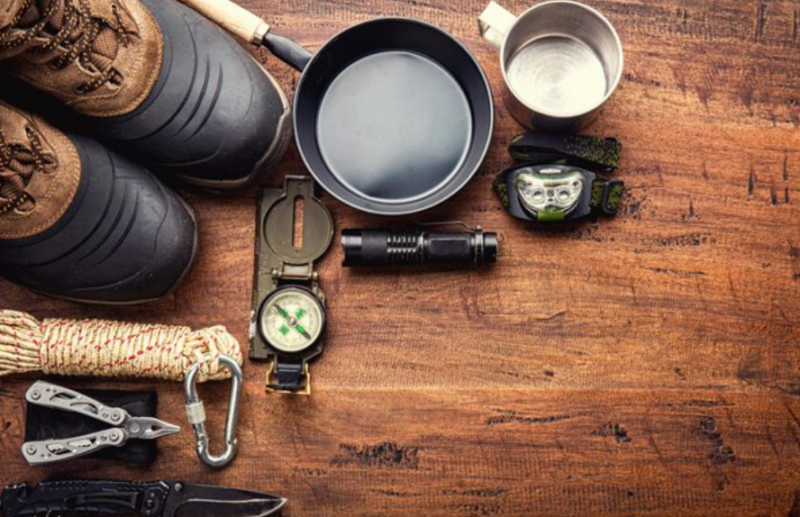Minimalist camping is an outdoor adventure style that prioritizes simplicity and efficiency. This approach allows campers to connect more deeply with nature by carrying only essential gear while reducing the burden of excessive equipment. As outdoor enthusiasts seek ways to enjoy the wilderness without unnecessary encumbrance, the minimalist camping trend has gained significant traction.
In the realm of minimalist camping, the focus is on the quality rather than the quantity of gear. Campers are encouraged to invest in versatile and durable items that provide multiple functions instead of carrying a plethora of single-use tools. This not only lightens the physical load but also minimizes the environmental footprint of their expedition.
Minimalist camping offers a unique opportunity to enhance one’s self-sufficiency and resourcefulness. By embracing this approach, adventurers can experience the joy of light travel, quick setups, and the freedom to explore remote destinations without being weighed down by heavy gear.
The Philosophy Behind Minimalist Camping
The philosophy of minimalist camping is rooted in the principle that less is more. This mindset encourages campers to focus on what truly enhances their outdoor experience, eliminating items that add weight or complexity without significant benefit. It aligns with the broader minimalist lifestyle, promoting mindfulness and intentionality in all aspects of life.
Adopting a minimalist camping approach means prioritizing the essentials—only the gear that guarantees safety, comfort, and practicality. This often involves selecting items that are compact, multifunctional, and made from lightweight materials. For example, a heavy-duty tent designed for minimalist camping might offer exceptional protection and durability without the bulk of traditional tents, a perfect balance of strength and simplicity.
Enthusiasts of minimalist camping often find that their adventures become more enriching as they are not distracted by excessive gear management. This freedom allows for a deeper connection with nature and a more immersive experience in the great outdoors.
Essential Heavy Duty Tent Features
A heavy-duty tent is a cornerstone of any minimalist camping setup. Despite the minimalist philosophy, a tent must meet specific criteria to ensure camper safety and comfort. The ideal heavy-duty tent should excel in durability, weather resistance, and ease of setup.
- Durability: The tent must withstand various environmental conditions, from harsh winds to heavy rain. High-quality materials such as ripstop nylon or polyester with reinforced seams contribute to a tent’s longevity and resilience.
- Weather Resistance: A tent’s ability to provide reliable shelter in adverse weather is crucial. Features such as waterproof coatings, sturdy poles, and a robust rainfly can significantly enhance its weatherproofing capabilities.
- Ease of Setup: Time is of the essence in camping situations, especially in unpredictable weather. A tent that is quick and straightforward to erect can be a lifesaver, allowing campers to establish shelter swiftly and efficiently.
When choosing a heavy-duty tent for minimalist camping, consider these features carefully. The right tent will offer the perfect balance of strength, protection, and weight, aligning with the minimalist ethos of carrying only what is necessary.
Top Minimalist Camping Tools for a Lightweight Experience
In addition to a heavy-duty tent, several other tools are indispensable for a minimalist camping adventure. These tools are designed to maximize functionality while minimizing weight and bulk, ensuring campers are well-equipped for their journey.
1. Multitool
A high-quality multitool is one of the most versatile items a camper can have. With various functions such as a knife, screwdriver, and bottle opener, it helps reduce the need for multiple individual tools, saving space and weight.
2. Compact Cookware
Cooking gear should be lightweight and capable of nesting together for efficient packing. Materials like titanium or hard-anodized aluminum offer durability without adding unnecessary weight. A compact stove that uses minimal fuel is also a valuable addition.
3. Lightweight Sleeping Bag
A sleeping bag that offers warmth and comfort without bulk is essential. Look for designs made with down or synthetic insulation that compress easily and maintain their thermal efficiency.
4. Water Filtration System
A portable water filtration system is crucial for staying hydrated in the wild. Options like gravity-fed filters or compact pump systems ensure access to clean water without the need for heavy water containers.
By selecting these tools with care, minimalist campers can enjoy a lightweight yet well-equipped experience, allowing them to focus on the adventure rather than the gear.
Beach Camping in Batangas: A Guide
Batangas is a popular destination for beach camping in the Philippines. Its pristine beaches, crystal-clear waters, and stunning landscapes make it an ideal spot for those looking to enjoy the simplicity of seaside camping.
Beach camping in Batangas offers a unique blend of relaxation and adventure. Campers can enjoy activities such as snorkeling, swimming, and beachcombing, all while taking in the breathtaking scenery. The area is known for its vibrant marine life, making it a haven for underwater exploration.
When planning a beach camping trip in Batangas, it’s essential to choose a camping site that aligns with minimalist principles. Look for locations that are accessible yet secluded enough to provide a sense of solitude and connection with nature. Consider the environmental impact and ensure that the site supports sustainable camping practices.
Top Beach Camping Spots in Batangas
- Laiya Beach: Known for its white sands and clear waters, Laiya offers a range of camping options from basic to more developed sites.
- Calatagan Beach: Offers a serene environment with options for both tent camping and glamping.
- Anilao: Perfect for diving enthusiasts, this spot allows for easy access to the rich marine biodiversity of Batangas.
Choosing the Right Camping Site
Selecting the right camping site is a critical aspect of any minimalist camping trip. The ideal site should offer a balance of accessibility, natural beauty, and amenities while minimizing environmental impact.
Considerations for Choosing a Site:
- Location: Proximity to trails, water sources, and points of interest can enhance the camping experience. It’s also wise to research the availability of camping sites near your location by searching for “camping site near me” to find convenient options.
- Environment: Assess the terrain and weather conditions of the area. Ensure that the site is safe and suitable for setting up a heavy-duty tent and other essential gear.
- Sustainability: Opt for sites that encourage eco-friendly practices, such as designated fire pits, waste disposal facilities, and guidelines for minimizing human impact on the environment.
By considering these factors, campers can select a site that not only enhances their outdoor experience but also supports the principles of minimalist camping.
Packing Tips for Minimalist Camping
Efficient packing is a cornerstone of minimalist camping. By prioritizing essential items and organizing them effectively, campers can ensure they are well-prepared for their adventure without being weighed down by excess baggage.
Tips for Packing Light:
- Create a Checklist: List all necessary items, focusing on multifunctional gear that serves multiple purposes.
- Optimize Clothing: Choose lightweight, moisture-wicking fabrics that can be layered. Limit the number of clothing items to essentials only.
- Use Packing Cubes: These can help organize gear and maximize space within a backpack, making it easier to access items quickly.
Another strategy is to pack according to the weather and duration of the trip. By anticipating conditions, campers can tailor their gear selection to include only what is necessary, aligning with minimalist principles.
Maintenance and Care for Your Camping Gear
Proper maintenance and care of camping gear are crucial for ensuring its longevity and functionality. This is especially true for heavy-duty tents and other essential equipment used in minimalist camping.
Maintenance Tips:
- Clean and Dry: After each trip, clean and thoroughly dry all gear to prevent mold and mildew. Pay special attention to tents, sleeping bags, and cookware.
- Inspect for Damage: Regularly check gear for wear and tear, repairing any damage promptly to avoid issues during future trips.
- Proper Storage: Store gear in a cool, dry place away from direct sunlight. Use storage bags that allow for ventilation to maintain the integrity of the materials.
By maintaining their gear properly, campers can ensure that their equipment remains reliable and effective, supporting future minimalist adventures.
Final Thoughts: Embracing Minimalism in Outdoor Adventures
Embracing minimalist camping can transform outdoor adventures, offering a more profound connection with nature and a sense of freedom that is often lost amidst clutter and excess. By focusing on essentials and adopting a mindful approach, campers can enhance their experiences and foster a deeper appreciation for the natural world.
Minimalist camping is not just about reducing physical load, but also about cultivating a mindset of intentionality and simplicity. This philosophy encourages campers to consider the impact of their choices on the environment and to seek out experiences that are enriching and sustainable.



